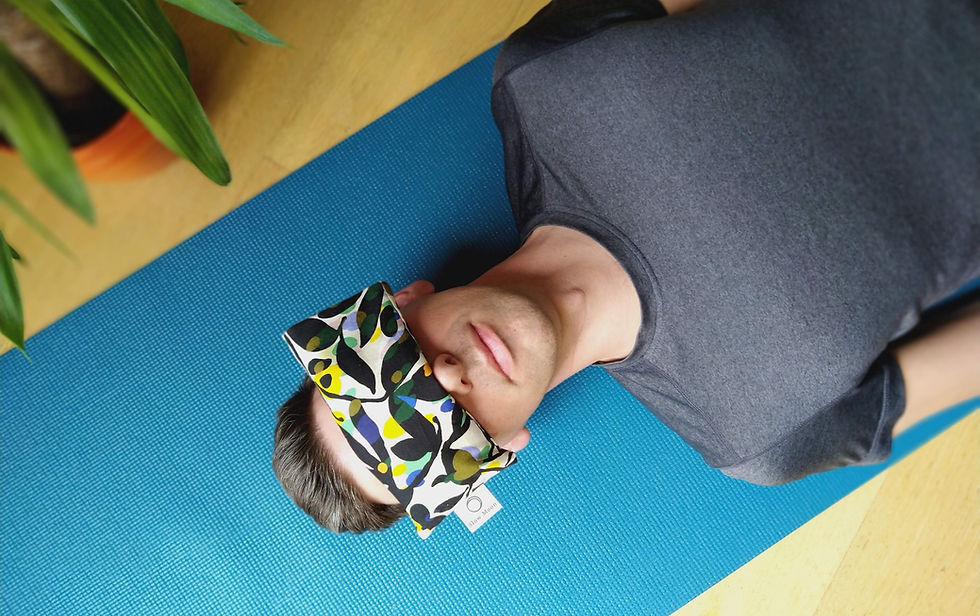The smallest change, boost your happiness. Two minutes with your eye pillow a day
- Priscilla Fernandes

- Nov 17, 2021
- 2 min read
Updated: Jun 7, 2022
Placing a small bag over your eyes may not be the most obvious way to relax but for those that have tried using an eye pillow the results are obvious and extend far beyond simple recreation.
Today, both science and experience show that using an eye pillow as part of a daily practice not only helps you relax but can aid deeper meditation, connecting you with your body and boosting your general mood.

Origins and the nervous system
A centuries old tool, eye pillows originated from the yoga practices developed in the Indus Valley, a sophisticated Bronze Age civilisation that spanned Afghanistan, Pakistan and North-West India. Derived from the Sanskrit word ‘yuj’, yoga is aimed at achieving oneness with Atman, the true Self, and a key element of this ignoring external distractions to listen to your body.
A key element of all yoga practice is the vagus nerve, the longest nerve of the autonomic nervous system. One of twelve cranial nerves that starts in the brain, this nerve travels down the back of the neck and into the chest and heart, connecting the belly, diaphragm, lungs, throat, inner ear, and facial muscles.
Modern science has revealed the vital role that yoga can play in balancing the vagus nerve, whether through breath or movement, and more recently the role that the eyes and optic nerve play in balancing this system.

Naturally regulating the body
It turns out that exerting a small pressure on the eyeballs can lower your heart rate, affecting your body’s natural ability to enter a relaxed state. This process, known as the oculocardiac reflex, extends far beyond the brain and can regulate mood, digestion and many other aspects of your body.
As one of the main communication channels between the mind and body, the vagus nerve is vital for regulation of our breathe and digestive system and in achieving control over our bodies response to external stresses, and as such has been central to yoga practice for millennia.
The addition of an eye pillow boosts the body’s natural regulation by blocking out external stimuli and triggering this oculocardiac reflex to provide a light pressure on the eyeballs. When used regularly as part of your daily routine this can further improve long-term stress resilience and help you attain deeper states of meditation.
Using your eye pillow:
Place over your eyes or on your forehead. If you have a daily yoga practice, then during savasana, at the end of your practice, is the ideal time to use your eye pillow.
If you don't currently have such a routine, try to find a time when you are naturally relaxed and spend just 1- 2 minutes with the eye pillow over your eyes. Remember that, as with any practice, it is best to slowly build rather than trying a one-off quick fix for stress, pain or negative moods. A daily routine will deliver the best results.
You can aim to combine your daily eye pillow use with breathing techniques and guided meditation to deepen embodiment.




















Comments